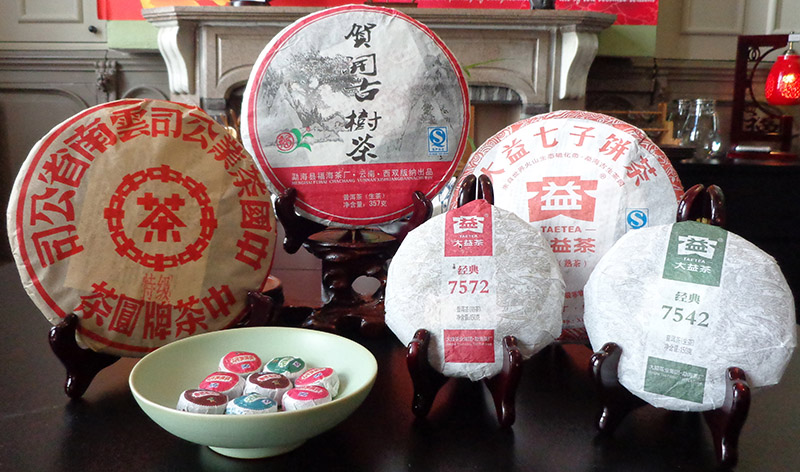Tea is more then just a beverage, It is a way to live healthy...
Pu' Er Tea (Aka Drinkable Antique)
Fermentation: Post-fermentation from aging.
Growing Regions: Yunnan.
Most Popular Varieties:
Raw (Sheng).
Cooked (Shou).
Pu'er tea is another of China's precious treasures and has only recently been introduced in the West.
In China, black tea is a post-fermented tea, which is unlike any other tea in the world. Chinese Black
Teas in the West are actually known as Red Teas in China. Pu'er tea is known as the most famous Black Tea in China.
Much like a good wine, Pu'er tea production is highly related to region to ensure the highest quality and authenticity.
Only the teas comes from Yunnan province can be called Pu'er tea. Pu'er tea can be aged and the taste gets better and better over time! But don’t worry,
when stored and aged correctly, your tea remains healthy and wonderful taste throughout the years!
Each area from Yunnan province produces its own special type of leaves. Some leaves are picked from plants and trees that
grow wild on the hillsides. Some trees are said to be over 1,000 years old. That is why we call it drinkable antique!
Process: Fresh tea leaf → Withering → Kill Green → Forming → Sun Drying → shaping → drying →Raw Pu'er Tea
Process: Fresh tea leaf → Withering → Kill Green → Forming → Sun Drying → cooking → shaping → drying → Cooked Pu'er Tea

A selection of some of our finest Pu'er tea.
Type : Raw & Cooked Pu'Er Tea.
Origin : Yunnan Province, China.
Leaves are compressed into a cake shape of different sizes.
Health benefit of Pu' Er Tea.
Scientific studies report that consumption of pu'er tea leaves significantly suppressed the expression of fatty acid synthase (FAS) in the livers of rats;
gains in body weight, levels of triacylglycerol, and total cholesterol were also suppressed. The compositions of chemical components found to have
been responsible for these effects (catechins, caffeine, and theanine) varied dramatically between pu-erh, black, oolong, and green teas.
Specific mechanisms through which chemicals in pu'er tea inhibit the biosynthesis of cholesterol in the laboratory have been suggested.
Pu'er tea has also been found to have antimutagenic and antimicrobial properties in vitro. (In vitro studies do not necessarily correlate to medicinal effects.
An article in Microbiologist, The magazine of the Society for Applied Microbiology, in March 2008, Vol 9 No 1, p35, found that tea had many in vitro antimicrobial
properties against many organisms; for example English Breakfast tea at the concentration used for drinking had significant antimicrobial effect on the lethal anthrax
bacillus (Bacillus anthracis) and many others, but this did not make it a useful treatment for anthrax.)
Pu'er tea is widely believed in Chinese cultures to counteract the unpleasant effects of heavy alcohol consumption[citation needed]. In traditional Chinese medicine
it is believed to invigorate the spleen and inhibit "dampness." In the stomach, it is believed to reduce heat and "descends qi".
Pu'er tea is widely sold, by itself or in blends, with claims that it promotes loss of body weight in humans, although there is no accepted evidence for this.
Some pu'er brick tea has been found to contain very high levels of fluorine, because it is generally made from lesser quality older tea leaves and stems,
which accumulate fluorine. Its consumption has led to fluorosis (a form of fluoride poisoning that affects the bones and teeth) in areas of high brick tea consumption,
such as Tibet.
Source = Wiki.
